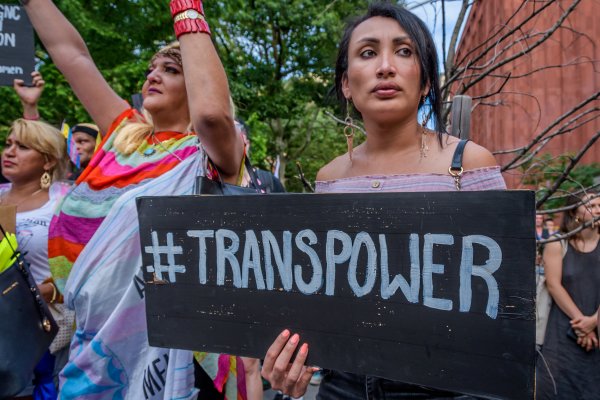This article is written by M.S. Bushra Tungekar from the University of Mumbai Law Academy. In this article, the author discusses the challenges faced by the transgender community at the workplace and the existing rights of a transperson relating to employment. The article also discusses the strategies which the organizations must implement for a trans-inclusive workplace.
Table of Contents
Introduction
From being bullied in school to being an embarrassment to the family to being harassed at home and in public places, the ill-treatment and discrimination of the transgender community are sadly, quite common in India. The community doesn’t know what it’s like to be treated with equality and respect. There is nothing easy about being a trans person.
More than often, in Indian society, conversations surrounding the topics of sex, sexuality, and sexual orientations are taboo due to which many transgenders are left to fend for themselves. With the lack of family support, formal education, and financial support many members of the community are forced to earn their livelihood through begging and sex work. Therefore, the transgender community is one of the most unheard and ignored communities in India. If by chance they are successful in gaining formal education by keeping their identity in wraps, a new set of challenges awaits them in the corporate environment. A study on human rights of transgender as the third gender by the National Human Rights Commission India (NHRC) states that 99 percent of the people belonging to the transgender community face social exclusion and rejection on numerous occasions. The inclusion of the transgender community in terms of employment opportunities is still a goal.
What challenges does the transgender community face
Gender presupposition from kids at a young age leads to trans kids being abused at home. Due to shame and the stigma of embarrassment, trans kids are often abandoned by their families. Other than the societal rejection and violence, the challenges of the trans person do not come to end. They have to overcome various hurdles in not securing jobs but facing the challenges in the workplace. The major challenges are:
Lack of education
One of the major challenges faced by the transgender community while securing jobs is the lack of formal education. Many of the trans persons when they come out to their family at a very young age are abandoned and therefore, are unable to receive a formal education. The discrimination against them begins at school. At an early age, right from childhood, society enforces gender stereotypes on children. Lack of awareness causes the third gender to get bullied at school which is why they drop out. The lack of sensitivity from not only the students in school but also the teachers and the administration impacts mental health and is an issue that needs to be addressed in India. There is a need for making schools and colleges trans-inclusive so as to give the community a near equal opportunity in securing jobs.
Lack of acceptance
If somehow a trans person is able to attain education, the stigma follows them at their workplace. More than often are they subjected to exclusion and harassment at their workplace. A lot of time in order to avoid this discrimination they even choose to hide their true identities. They try to fit into the societal norms for their survival and livelihood.
The co-workers are more than often insensitive towards the third gender. There is a lack of awareness and sensitisation of the gender-inclusive work environment. It is important that the workplaces are more sensitive and accepting of the innate personality of the third gender.
Lack of incentivizing the employer
Although the laws look beneficial for the trans community. They seem to be moving towards a progressive society. However, it’s merely in theory and there’s no practical applicability. There are no provisions incentivizing employers into hiring people of the third gender. There have been instances where the person of the trans community has had to quit their jobs due to harassment and discrimination. Discrimination is prevalent everywhere, from the workplace to acceptance of accommodation.
An example of such an incident is what took place in Kerala in 2017. Kerala’s Kochi metro limited hired 27 transgender employees but because the landlords wouldn’t provide accommodation to them, 8 out of 27 employees had to quit their job. They were forced to quit their jobs within a month. There were no remedies except for quitting their jobs, as their employer was under no legal obligation.
Need for a trans-inclusive workplace
Apart from the humanitarian ground of giving equal opportunity irrespective of their gender identification, an inclusive work environment attracts the best talents to an organisation which is beneficial for the organisation and many companies have reaped the benefit of diversity in the workplace.
Discriminating while hiring costs the loss of innovation to the organization and it slows down economic growth as an entire pool of talent is neglected which goes to waste. According to the World Bank Report of 2016, India loses an estimate of US$32 billion or 1.7% of India’s ss GDP due to the continuance of homophobia. Nowadays, there has been an increase in work-related international migrations. An inclusive work environment reflects on the values of the organization and attracts the global workforce to the organization as well.
India’s millennials have become more politically aware and focus on human rights causes before making their purchase choices. The young generation is more favorable towards brands that are progressive and are more supportive of social causes. Therefore having a gender-inclusive work environment is good for the brand image and the public relations of the company.
Existing workplace rights to the transgender community in India
Acceptance and awareness regarding the discrimination against the transgender community are increasing in India. The change is being bought by the constant efforts of the activists. The Hon’ble Supreme court of India in 2014 passed a landmark judgment in the case of the National Legal Services Authority (NALSA) vs. Union of India, recognizing the rights of the third gender.
The apex court in the case of the National Legal Services Authority (NALSA) vs. Union of India, for the first time, recognized the rights of the transgender person. The court also laid emphasis on the issue of discrimination against the trans community at workplaces in India. Further, in the case, the court held that Article 21 enshrines the right to live with dignity on the third gender as well and the court also weighed upon “gender identity” at length. The apex court further directed the state and the Central Government to develop mechanisms or programs for tackling the stigma against the third gender and to make provision for the protection of the rights of the third gender.
This landmark case provided legal backing for the Transgender Persons (Protection of Rights) Bill, 2016. The bill was passed by the parliament as the Transgender Persons (Protection of Rights) Act, of 2019. However, the act faced severe criticism from the community.
Criticism of 2019 Act
- The Act was drafted and passed without taking into consideration the recommendations presented by the transgender community. The Act was supposed to protect the rights of the trans community but the Act was drafted based on stereotypes. The needs and requirements of the community were not consulted.
- Although the Act provides for self-perceived gender identity, it is provided at the cost of humiliation, failing to portray the same sentiments as the NALSA judgment. The Act requires a trans person to obtain a certificate from the district magistrate in order to identify as a transgender person. Furthermore, needless procedures have been established under the Act to simply identify as a Transgender.
- The Act also states that in case if the biological family of a transgender person abandons them or they choose to leave their biological family, they shall on the direction of the high court be sent to a rehabilitation center. One cannot deny the persons of the transgender community the right to choose their family. As it has been seen that the transgender person feels safe, accepted in living with the community. They also receive the support of their community.
- The Act also discriminates while punishing the offenders of criminal offenses against trans persons. The punishment for offenses such as sexual offense or sexual abuse is a minimum of 6 months and a maximum of 2 years, where if the victim of a similar offense would have been a female then the punishment is more serious in nature with a minimum punishment of 7 years going up to a maximum of life imprisonment.
- According to a survey conducted by the census in 2011, the survey revealed that the employment rate among the transgender community is as low as 38 percent and the education rate is around 46 percent.
Employment-related provisions under the Act
- Section 3(b) prohibits discrimination or ill-treatment of a person identifying as the third gender in relation to occupation or employment.
- Section 3(c) forbids unfair termination from employment or occupation and discriminatory treatment against a trans person during the course of employment.
- Section 9 forbids an employer of an establishment from discriminating against the trans person in matters with respect to the matters concerning employment including matters related to promotions, and recruitment.
- Section 10 puts an obligation on the employer to comply with the provisions of the Act and make necessary arrangements for the required facilities by trans persons.
- Section 11 provides for a grievance redressal mechanism by requiring the employer to appoint a complaint officer, who shall be dealing with the complaints relating to the violation of the provision of this Act.
- Section 14 creates an obligation on the government to formulate welfare schemes and programs for facilitating vocational and self-employment training for the trans person so as to facilitate them in earning their livelihood.
- Section 18(d) provides for punishments and penalties in case of dangers to life, safety, health inclusive of both mental and physical health, of a transgender person with a punishment of imprisonment not less than 6 months going up to two years and fine or both. The section also makes sexual, physical, verbal, economic, and emotional abuse punishable.
There is a need to bring amendments to the Sexual Harassment of Women at Workplace (prevention, prohibition, and redressal) Act, 2013. The inclusion of the transgender to this Act is necessary for ensuring proper mechanisms for the protection of the transgender person against sexual harassment at the workplace.
The Hon’ble Supreme Court in the historic case of Navtej Singh Johar v. Union of India decriminalized same-sex relationships between consenting adults. The Apex Court excluded consensual sexual relationships among consenting adults irrespective of same-sex individuals. Therefore, there is a need for an amendment in the Maternity Benefit Act, 1961 as it is still unclear whether a trans woman wishing to adopt a child could be covered under the Maternity Benefit Act.
Case studies in India
VLCC (Hyderabad)
In 2018, VLCC opened its doors to the transgender community. VLCC trained nearly 24 employees identifying as transgender. The VLCC training institute provided a free training course. The duration of the course was 90 days. It was for the position of assistant beauty therapist with complete knowledge of hair and skin care. Other than the training and the placement an addition of Rupees 2000 was paid to the participants for the purpose of conveyance.
The Lalit hotels
The Lalit hotels have been taking various initiatives in empowering the transgender community. By implementing LQBTI friendly policies, to gender-neutral restrooms, and to form having the option of the third gender. Some of the other initiatives are:
- The hiring of the third gender and placing them in a position of visibility.
- The group has even offered to financially support gender reassignment surgeries.
- The Keshav Suri Foundation offered educational scholarships to trans students worth INR 75,000. The scholarship was awarded to 5 students for a diploma course in food production and bakery.
- Implementation of dress code and anti-discrimination policy.
Recommendations for the employers
It is essential for organizations to focus on fostering a trans-inclusive work environment. It is important that the employees identifying as the third gender feel safe and secure in the workplace. The feeling of being included and being treated as an equal will also increase their productivity and they will be more loyal towards the organization. In the view of progressing dynamics, some of the steps that an organization can undertake to become a trans-friendly workplace are discussed below:
A paper on the situation of a trans person in India and how the corporates can bring about a change by Godrej titled ‘A Manifesto for Trans Inclusion in the Indian Workplace’ recommends trans inclusion strategies. The paper suggests that fostering a trans-friendly environment at the workplace includes 9 basic elements such as:
An anti-discrimination policy
The first and foremost basic step towards a trans-inclusive work environment that an organization must take is updating its policies. The policies should condemn transphobic discrimination and should be detailed and easy to understand. The anti-discriminatory policies should provide for what would constitute grounds for discrimination based on gender. The policies can also include examples of what would constitute transphobic discrimination. The policies should be reviewed on a timely basis. It should not just exist on paper, there should be frequent reviewing and monitoring of the implementation of the anti-discriminatory policies. A proper grievance redressal mechanism must be put in place to deal with complaints or violations of these policies.
The hiring of trans persons through human resources
- The organizations must encourage people belonging to the transgender community in applying for jobs in the company. It must show its support to the community by advertising about vacancies as an equal opportunity for all regardless of their gender identity.
- One of the ways wherein organizations can show their support is by dropping the usage of the pronouns “he/she” in their advertisements or in their posts for job vacancies. As the use of gendered pronouns reflects a subconscious bias.
- The job applications must not be gender-biased; they can either have the option of mentioning their gender identity which includes the third gender or the applications if feasible, must ask for the gender of the applicant.
- The human resource department of the organization must be trained as to how to be sensitive and interact with the person identifying as the third gender so that they unknowingly do not make the candidate feel uncomfortable or humiliated.
- The dress code policies should be such that it allows the trans person to choose the dress code as per their gender identity or their gender expression.
Sensitization and education of employees
It is very crucial for an organization to ensure that its existing employees are aware of the changes taking place in the organization. It is important that existing employees are sensitive to new employees.
Organizing conferences and workshops help in sensitizing the employees. Other things that help in sensitizing the employees are talks and discussions on trans role models, personal success stories of the trans person working in other offices. Interactive sessions with local trans persons.
Conducting informative workshops educating the employees about the transition process, clearing the misconceptions, and educating them of what may pass off as offensive and transphobic behavior.
Gender-neutral restroom infrastructure
Other than the implementation of policies and sensitization of employees there is also a need for some physical infrastructural changes. The organization must install gender-neutral restroom facilities. Many times the transgender feel unsafe or denied access to the washrooms according to their sexual expression.
Therefore, there is a need for gender-neutral restrooms. Creating a third gender restroom would also create a divide and might even make a transgender person uncomfortable. Therefore, choosing a gender-neutral restroom is more feasible. Also, those trans persons who are not out of the closet wouldn’t want to use a third-gender washroom.
Another approach which the company can take is that since the washrooms are already gendered there can be one washroom in the building which is gender-neutral.
Insurance and medical benefits
As the aim of a trans-inclusive work environment is to provide the transgender community with equal opportunity, they should also be entitled to the same medical and insurance benefits as any other employees. They should be offered the same policies for adoption or maternity or paternity leaves. Their cohabitating couples should be considered similar to a spouse for health insurance benefits.
Provisions for easing gender transition at the workplace
While hiring it is not necessary that the organization shall always hire a trans person who has completely transitioned. There will be instances wherein the employees haven’t completely transitioned or are in the process of transitioning or intend to transition later on. The process of transition can be a very personal process and life-changing event for an individual. It should be treated with importance and adequate procedures should be implemented to help and support the person within the organization to transition as comfortably as possible.
Creation employee resource group
While there are policies being implemented and infrastructural changes being made simultaneously, the organizations can create a forum for the persons identifying as the third gender. The creation of an employee resource group can help the organization in becoming gender-inclusive. The members of this group can help the new employees in transitioning or navigation through the organization like a buddy system.
Advocating trans policies
Having external conversations about a trans-inclusive work environment is equally important as having an internal conversation. Using the pride colours on the website or the social media handles of the organization shows the support of the organization towards the transgender community. The company website must also include the policies and initiatives regarding the equal opportunity provided by the organization regardless of gender expression.
Being considerate about other issues of the trans employees
More than often the landlords deny housing facilities to the transgender community due to the social stigma. At times a trans person is even unable to pay the rent due to the cost of their hormone treatments. The organizations in such circumstances should be mindful and should try to help the employee find suitable housing. The organizations must also focus on the skill sets and not purely qualifications. If needed they can try and provide intense training before hiring the trans person in order to make up for the little lack of qualification.
Conclusion
India is still coming around to accepting the societal change of including and accepting transgenders. The societal change of this magnitude is definitely going to take time. Social activists, the judiciary as well as the legislature are making joint efforts in improving the status of the transgender community. For the development and for removal of the stigma, it is vital to create a trans-inclusive work environment. Although the Act does not make the inclusion of the trans community for employment a legal requirement it merely puts an onus on the employers.
Despite efforts taken, there has been discrimination against the transgender community. The discrimination may not be as public but there is definitely some secret discrimination by organizations in hiring the third gender. The major causes are the lack of education and lack of acceptance of the third gender as equal by society. However, the corporate environment can play an important role in empowering the transgender community, by making the workplaces trans-inclusive and curbing the discrimination faced by the community.
LawSikho has created a telegram group for exchanging legal knowledge, referrals and various opportunities. You can click on this link and join:












